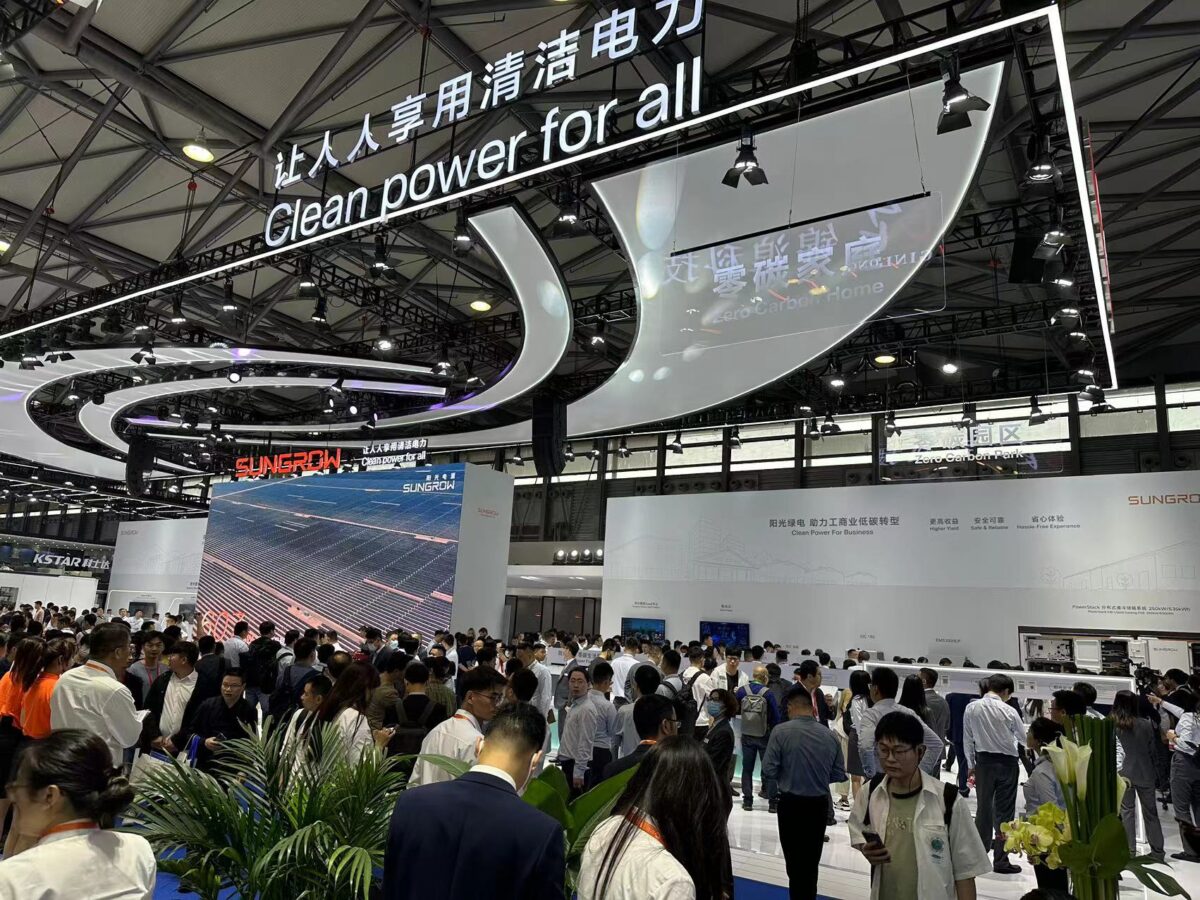From pv magazine Global
The 16th International Photovoltaic Power Generation and Smart Energy Conference and Exhibition in Shanghai is breaking all previous attendance records for any solar energy trade show in the world.
The talk in the packed 28 halls of SNEC (another record) is of 400,000 visitors and more than 2,800 exhibitors. SNEC 2023 is the first post-pandemic show and with China expected to install at least 130 GW this year, it fits this booming market that its leading trade show is also breaking all records.
Leading Chinese module manufacturers have some of the biggest booths at this show and are touting record conversion efficiencies, both on the cell- and module-level, and both in the lab and in mass production. There is much talk of the migration from p-type PERC to n-type technologies, including TOPCon and HJT. Higher and higher conversion efficiencies are accompanied by higher and higher production scale to meet both Chinese demand and overseas demand.
Scaling up quickly is not an art reserved to module manufacturers. pv magazine met with one Chinese inverter manufacturer that is scaling up in blocks of 40 GW. Several production blocks are already in place and either churning out product already or in the near future and additional blocks (up to a cumulative total of ten) can readily be added to meet global demand.
The scale and execution speed of Chinese PV manufacturers is very impressive and flexibility is also at hand when needed. This year’s SNEC is a case in point: when the show’s organisers ran out of conventional exhibition halls they simply filled the old “valley of death” (the vast empty area in the middle of the triangular arrangement of the SNEC exhibition halls) with temporary tent-like exhibition halls. But even without the old “valley of death” it remains a heroic feat to cover all 28 halls in the two-and-a-half days of the SNEC exhibition.
Meanwhile, almost all major research institutes raised their installation targets for China in 2023. BloombergNEF said it expects now 154 GW on new PV, while in its previous forecast it said 129 GW. S & P said 136 GW.
Representatives from multiple module makers expressed even greater optimism, with projections ranging from 150 GW to 200 GW. While last year the technology was heralded as a competitor in the new high-efficiency squad, the trade show floor in Shanghai this year showed a different picture. A whole range of new companies, some of which just a few weeks old, touted modules using TOPcon cells with efficiencies beyond the 23% mark.
These suppliers also stated to make a start in manufacturing in the two-digit gigawatt scale. While it appeared that most manufacturers have made their bet on TOPCon, there were also many new module makers offering HJT modules, similarly with efficiency of above 23%. With some companies offering both module types.
Once a supplier can make modules there is no holding back on storage or inverters. Another trend that could be observed at SNEC that many companies now get their feet wet in the entire solar product portfolio. This was true for well-esteemed players of the solar market, such as GoodWe, which presented a range of BIPV options including solar tiles, or Jinko which has aside from its modules also storage and inverters on offer. But also new market entrants don’t hold back widening their product portfolio.
Authors: Vincent Shaw & Eckhart Gouras
This content is protected by copyright and may not be reused. If you want to cooperate with us and would like to reuse some of our content, please contact: editors@pv-magazine.com.








By submitting this form you agree to pv magazine using your data for the purposes of publishing your comment.
Your personal data will only be disclosed or otherwise transmitted to third parties for the purposes of spam filtering or if this is necessary for technical maintenance of the website. Any other transfer to third parties will not take place unless this is justified on the basis of applicable data protection regulations or if pv magazine is legally obliged to do so.
You may revoke this consent at any time with effect for the future, in which case your personal data will be deleted immediately. Otherwise, your data will be deleted if pv magazine has processed your request or the purpose of data storage is fulfilled.
Further information on data privacy can be found in our Data Protection Policy.